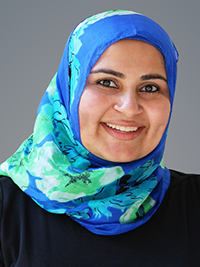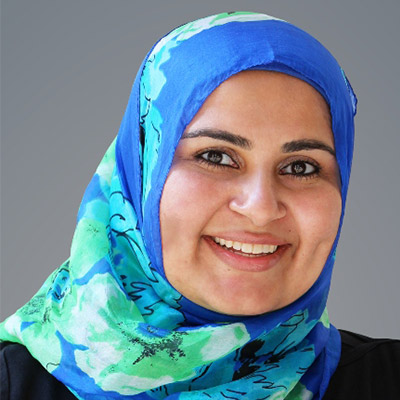A novel post-acute stroke care initiative employing telehealth to monitor patients’ blood pressure at home is showing positive results among patients living in under-resourced communities.
“Hypertension is the most important modifiable risk factor for a second or recurrent stroke,” says Imama A. Naqvi, MD, a neurologist in the Division of Stroke and Cerebrovascular Disease at NewYork-Presbyterian/
Dr. Imama Naqvi
According to Dr. Naqvi, community programs can address disparities among Black and Hispanic patients regarding home blood pressure telemonitoring and nurse care management. However, in post-acute stroke care, home blood pressure monitoring with custom infographics and multidisciplinary telehealth visits that include pharmacists has not been studied integrated into healthcare systems that care for underserved urban communities.
Since the COVID-19 pandemic, telemedicine has significantly expanded access to care, but there remain obvious disparities among vulnerable populations. Blood pressure telemonitoring has shown potential in decreasing blood pressure, and multidisciplinary team-based care has also demonstrated to be an effective approach in the general population.
Dr. Naqvi, whose clinical expertise includes post-acute stroke care and research that is focused on secondary stroke prevention strategies and biomedical informatics approaches to mitigate inequities among diverse stroke populations, developed an innovative multidisciplinary team-based model, including nursing, pharmacy, and physicians – Telehealth After Stroke Care – integrated with home blood pressure monitoring and education in the form of patient-tailored visual information. “Our goal was to establish the feasibility of the intervention in empowering self-management by providing accessible integrated services, equipment, and educational materials,” says Dr. Naqvi, who collaborated with Mitchell S.V. Elkind, MD, MS, Chief of the Division of Neurology Clinical Outcomes Research and Population Sciences, and Olajide Williams, MD, MS, Chief of Staff of the Department of Neurology at NewYork-Presbyterian/
In the investigation, 50 patients were enrolled from NewYork-Presbyterian/
Mobile health tools such as wireless blood pressure devices that enable remote monitoring are here to stay, and we need to find ways to utilize telemedicine to improve care for all stroke survivors.
— Dr. Imama Naqvi
Usual Care versus Telehealth After Stroke Care
In the study, acute stroke patients with hypertension were randomized at discharge to a control group receiving usual care and to the study cohort receiving usual care with TASC. Patients in the control group had a video conference appointment with a primary care professional 1 to 2 weeks after hospital discharge and video conference appointments with a stroke specialist at 6 and 12 weeks after discharge.
Patients assigned to the TASC intervention with usual care received:
- A tablet and monitor to wirelessly transmit BP data to the electronic health record
- Video visits with nursing and pharmacy support
- Plain language blood pressure infographics in English and Spanish to explain readings
Participants’ readings were sent to their electronic health record and, if needed, a nurse provided telephone support and could escalate the call to telepharmacists and physicians.
Key findings from the study included:
- The Telehealth After Stroke Care strategy saw a dramatic improvement in patient follow-up: 84 percent of patients in the TASC group completed the 12-week study, compared to 64 percent of patients in the usual care group.
- 91 percent of patients in the enhanced telehealth group completed the video visit with primary care professionals and specialists, compared to 75 percent of patients in the usual care group.
- Blood pressure control was better in the enhanced telehealth group at 76 percent, compared to 25 percent control in the control group.
- Among Black study participants, blood pressure control improved from 40 percent of participants at enrollment to 100 percent at the study’s conclusion in the TASC group and improved only from 14 percent to 29 percent in the control group.
Dr. Naqvi and NewYork-Presbyterian/
“Mobile health tools such as wireless blood pressure devices that enable remote monitoring are here to stay, and we need to find ways to utilize telemedicine to improve care for all stroke survivors,” adds Dr. Naqvi. “As physicians, we want to provide patients with equitable access to care and find the right post-stroke care interventions that engage patients and improve health outcomes.”
The neurology faculty acknowledge the contributions of their NewYork-Presbyterian/





